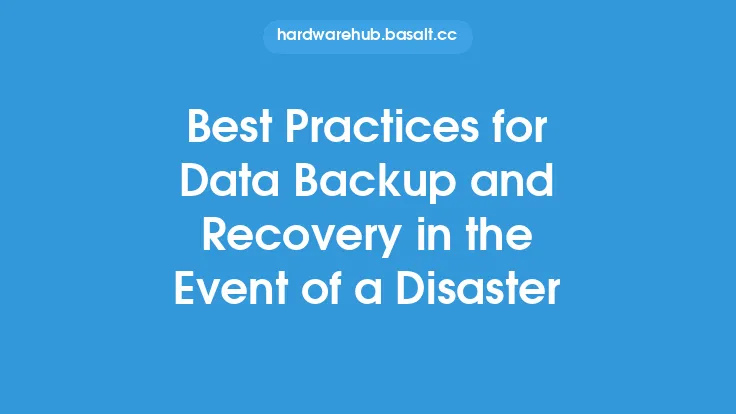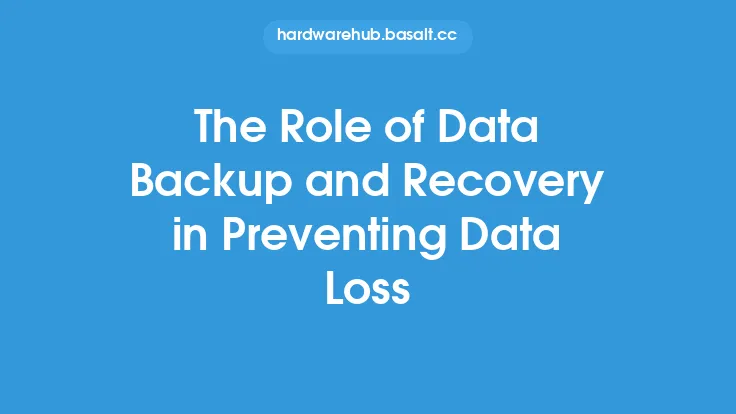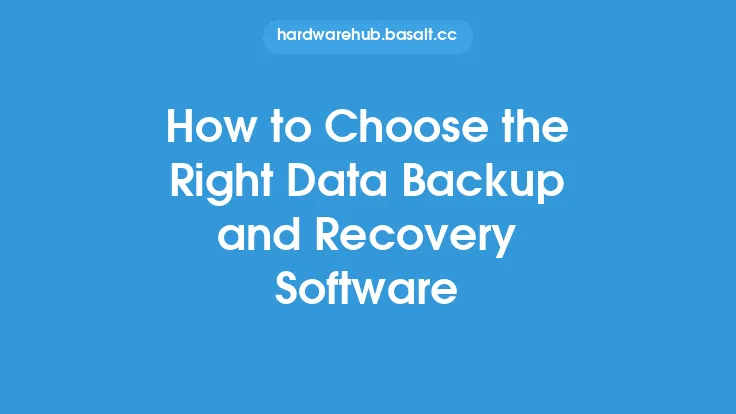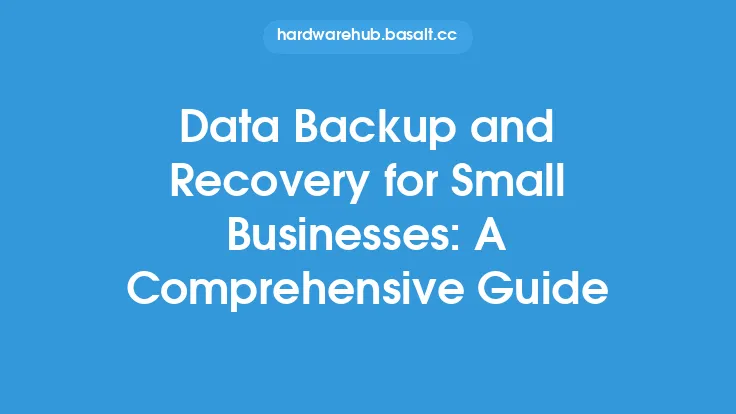In today's digital age, data is the lifeblood of any organization or individual. The loss of critical data can have severe consequences, including financial losses, reputational damage, and even business closure. One of the most effective ways to mitigate this risk is by implementing automated data backup and recovery systems. Automated data backup and recovery involves the use of specialized software or hardware to automatically backup data at regular intervals, without the need for manual intervention. This approach offers numerous benefits, including improved data protection, increased efficiency, and reduced costs.
What is Automated Data Backup and Recovery?
Automated data backup and recovery is a process that uses specialized software or hardware to automatically backup data at regular intervals. This can include backup of files, folders, databases, and even entire systems. The backup process can be scheduled to run at specific times, such as daily, weekly, or monthly, and can be configured to backup data to various storage devices, including external hard drives, tape drives, and cloud storage services. Automated data backup and recovery systems can also be configured to perform incremental backups, which involve backing up only the data that has changed since the last backup.
Benefits of Automated Data Backup and Recovery
The benefits of automated data backup and recovery are numerous. One of the most significant advantages is improved data protection. Automated backup systems ensure that data is backed up regularly, reducing the risk of data loss due to hardware failure, software corruption, or human error. Automated backup systems also provide a high level of reliability, as they can be configured to perform backups at specific times, without the need for manual intervention. This ensures that backups are performed consistently, even if IT staff are unavailable.
Another significant benefit of automated data backup and recovery is increased efficiency. Manual backup processes can be time-consuming and labor-intensive, requiring IT staff to spend hours backing up data. Automated backup systems eliminate this need, freeing up IT staff to focus on more critical tasks. Automated backup systems also reduce the risk of human error, as backups are performed automatically, without the need for manual intervention.
Technical Aspects of Automated Data Backup and Recovery
From a technical perspective, automated data backup and recovery systems use a variety of technologies to backup and recover data. One common approach is to use a backup agent, which is a software component that runs on the system being backed up. The backup agent is responsible for collecting data from the system and transmitting it to a backup server or storage device. The backup server or storage device can be located on-site or off-site, depending on the organization's backup and recovery requirements.
Another technical aspect of automated data backup and recovery is the use of snapshot technology. Snapshot technology involves creating a temporary copy of data, which can be used to backup and recover data. Snapshots can be created at the file level, the block level, or the virtual machine level, depending on the organization's backup and recovery requirements. Snapshots provide a high level of flexibility, as they can be used to backup and recover data in a variety of scenarios, including disaster recovery and data migration.
Cloud-Based Automated Data Backup and Recovery
Cloud-based automated data backup and recovery is a popular approach, as it provides a high level of flexibility and scalability. Cloud-based backup systems use cloud storage services, such as Amazon S3 or Microsoft Azure, to store backup data. This approach provides a number of benefits, including reduced costs, improved scalability, and increased reliability. Cloud-based backup systems can also be configured to perform backups in real-time, providing a high level of data protection and availability.
Best Practices for Implementing Automated Data Backup and Recovery
Implementing automated data backup and recovery requires careful planning and execution. One best practice is to develop a comprehensive backup and recovery plan, which outlines the organization's backup and recovery requirements. This plan should include details on the data to be backed up, the backup schedule, and the recovery process. The plan should also include details on the backup and recovery infrastructure, including the backup server, storage devices, and network infrastructure.
Another best practice is to test the backup and recovery system regularly, to ensure that it is functioning correctly. This can be done by performing test recoveries, which involve recovering data from backup to ensure that it is complete and accurate. Test recoveries can also be used to identify any issues with the backup and recovery system, such as data corruption or hardware failures.
Conclusion
In conclusion, automated data backup and recovery is a critical component of any organization's data protection strategy. The benefits of automated data backup and recovery are numerous, including improved data protection, increased efficiency, and reduced costs. By understanding the technical aspects of automated data backup and recovery, organizations can implement effective backup and recovery systems that meet their unique needs. Whether using on-site or cloud-based backup systems, automated data backup and recovery provides a high level of reliability and flexibility, ensuring that critical data is protected and available when needed.





